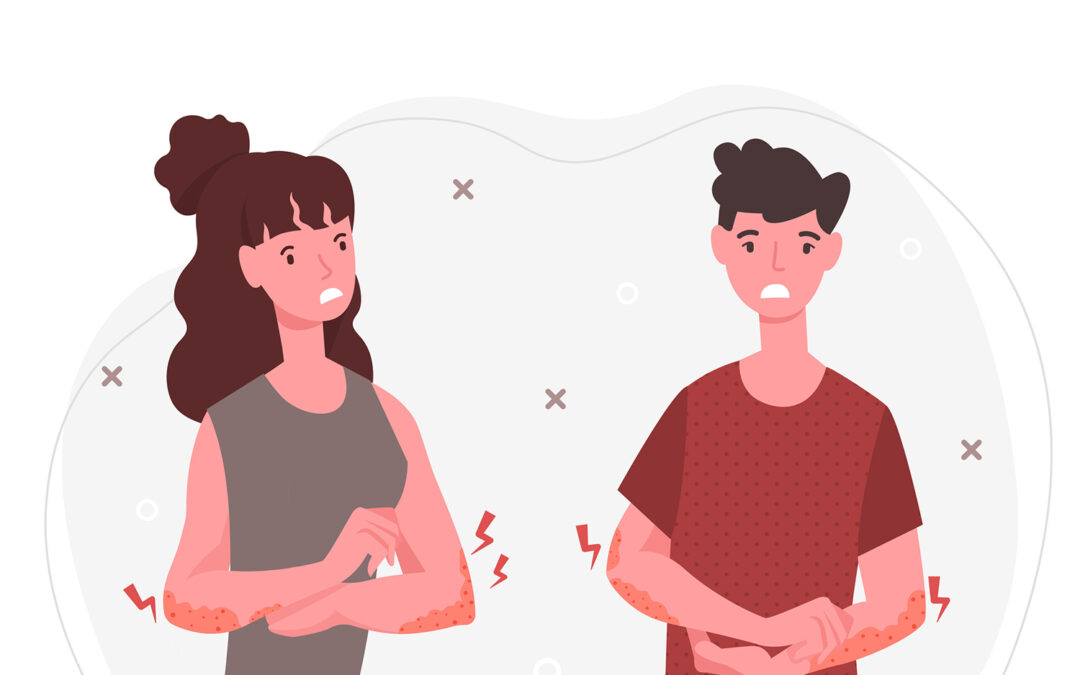You might’ve heard the term psoriasis before, and you might even be suffering the symptoms of the disease. However, many Americans lack an understanding of the disease. Nearly 7.5 million Americans suffer from psoriasis, many of which also suffer arthritic symptoms from the disease due to joint inflammation.
Psoriasis is more than skin deep. It’s a deeply irritating disease that, if left untreated, can impact your quality of life. With that in mind, we thought we’d produce a “quick guide” to psoriasis to help inform and encourage you to take action if you suffer from the illness.
What is Psoriasis?
We understand the symptoms of psoriasis much better than the cause. The most common symptom is patches of a thick rash due to an excess of skin cells, known as scale. These rashes can be painful and extremely itchy.
Less common are issues with your finger and toenails. “Nail psoriasis” looks like bumpy, discolored, and misshapen nails. It can be easily confused with a fungal infection of the nailbed.
Even rarer is “psoriatic arthritis” which affects about 20-30% of Americans with psoriasis. In some people, psoriasis causes inflammation of the joints, which resembles in many ways rheumatoid arthritis.
What Causes Psoriasis?
To be perfectly honest, the definite cause of psoriasis is unknown. Researchers speculate that the disease is caused by our immune systems. With diseases like psoriasis, it’s theorized that our immune systems attack our systems, thinking they are foreign bodies.
What we do understand is that psoriasis, though its cause is mysterious, has certain triggers. Things like stress, cold weather, and bacterial infections can cause outbreaks of psoriasis in individuals who have the disease. However, your triggers may change throughout your life, which only increases the mystery.
How Do You Treat Psoriasis?
Psoriasis treatment falls into three categories: topical, phototherapy (light), and oral/IV. The severity of your disease can play a part in what treatment is best for you, but many people take a trial-and-error approach starting with topical treatment. Let’s dive into all three treatments:
Topical Treatment
Creams and ointments make up this category. Corticosteroids are the most popular topical treatments, but there are many more that we can explore.
Photo Therapy (Light Therapy)
Ultraviolet (UV) light and laser treatment fall into this category. Several treatments use topical treatment and light therapy together, such as Goeckerman therapy, which uses sunlight and coal tar.
Oral & IV Treatment
Steroids are strong drugs that can react quickly and positively to a psoriasis outbreak. These can be applied topically (as we mentioned) or through oral or injectable medication. Retinoids and other medications are useful, too, and can be taken orally or injected. These treatments are ones that we can discuss during your visit.
Do you suffer from psoriasis? Don’t let it impact your quality of life any longer. Reach out to us today for an appointment. Let’s find a treatment that works for you.



Recent Comments